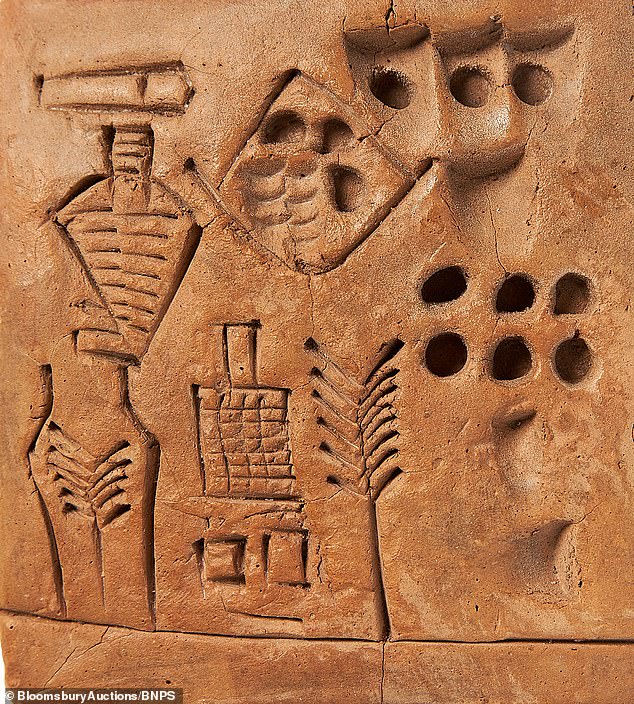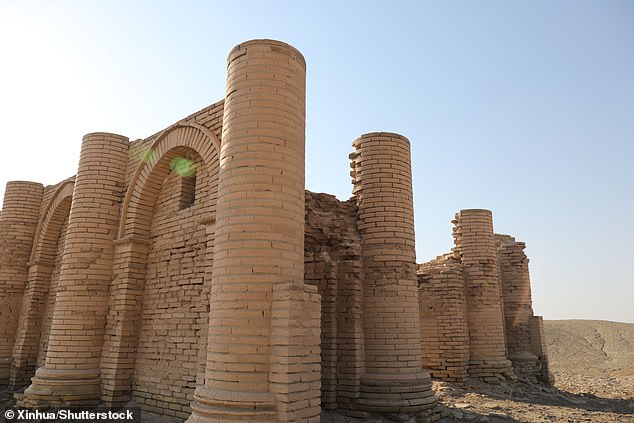It may not look like the text we know today, but experts believe this cylinder could signify the origins of writing.
Researchers have discovered links between very ancient cylinder seals and the world’s first writing system.
Their study focused on Uruk, an area of southern Iraq that was an immensely important cultural and commercial center about 6,000 years ago.
Cylindrical stone joints were invented in this area. They were engraved with designs and then rolled onto clay tablets to print their motifs on them.
Since the year 4400 BC. C. onwards, these seals were used as part of an accounting system to track the production, storage and movement of agricultural and textile products.
An example of a cylinder seal and its imprint in clay, which could indicate the origin of the writing, according to experts

A 5,000-year-old clay tablet believed to contain the “world’s first autograph”

The ruins of Uruk in Al-Muthanna province, Iraq, which was founded in 5,000 BC
Now, experts have found a link between these cylinders and protocuneiform, the first symbol-based writing that emerged about 1,000 years later.
Researchers from the University of Bologna compared the motifs of cylindrical seals with protocuneiform symbols and discovered that there is a direct relationship between the two.
The analysis revealed that seal motifs related to the transport of vessels and cloth were eventually transformed into protocuneiform signs, showing for the first time that there is continuity between the two.
For example, there are striking similarities between engravings on cylinder seals depicting vessels and fringed cloth and later protocuneiform symbols for the same.
The discovery demonstrates that the known motifs of cylinder seals are directly related to the development of writing in southern Iraq and provides important new insights into the evolution of symbol systems and writing, the researchers said.
Cylindrical seal motifs were regularly used between 4400 and 3400 BC. In comparison, the ancient Egyptians invented hieroglyphs around 3250 BC.

A tablet from the library of the Assyrian king Ashurbanipal, who amassed a collection of thousands of cuneiform tablets.

The remains of Uruk in southern Iraq, which was an immensely important cultural and commercial center around 6,000 years ago.
Professor Silvia Ferrara, co-author of the study, said: “The close relationship between ancient seals and the invention of writing in Southwest Asia has long been recognized, but the relationship between specific seal images and sign forms has barely been explored.”
‘Did images of seals contribute significantly to the invention of signs in the region’s first writing?
«The conceptual leap from pre-writing symbolism to writing is a significant advance in human cognitive technologies.
“The invention of writing marks the transition between prehistory and history, and the findings of this study bridge this gap by illustrating how some late prehistoric images were incorporated into one of the first invented writing systems.”
The findings were published in the journal Antiquity.


